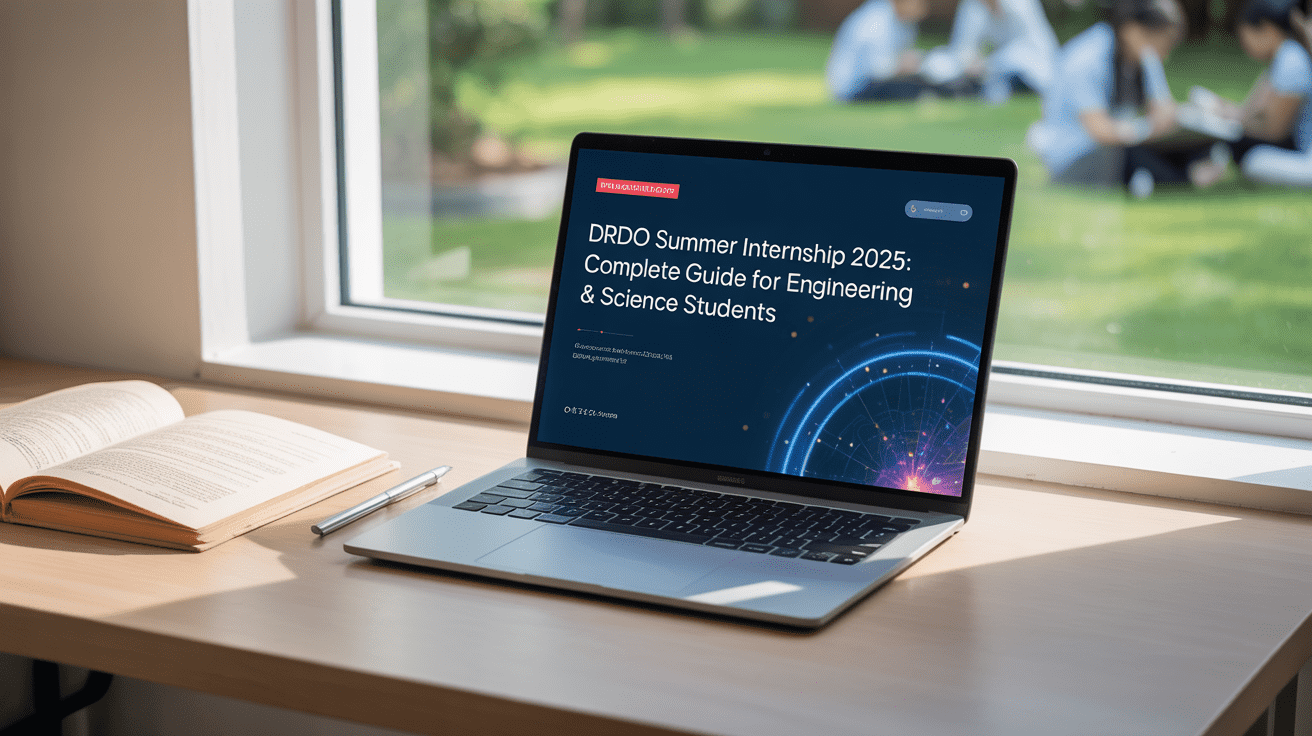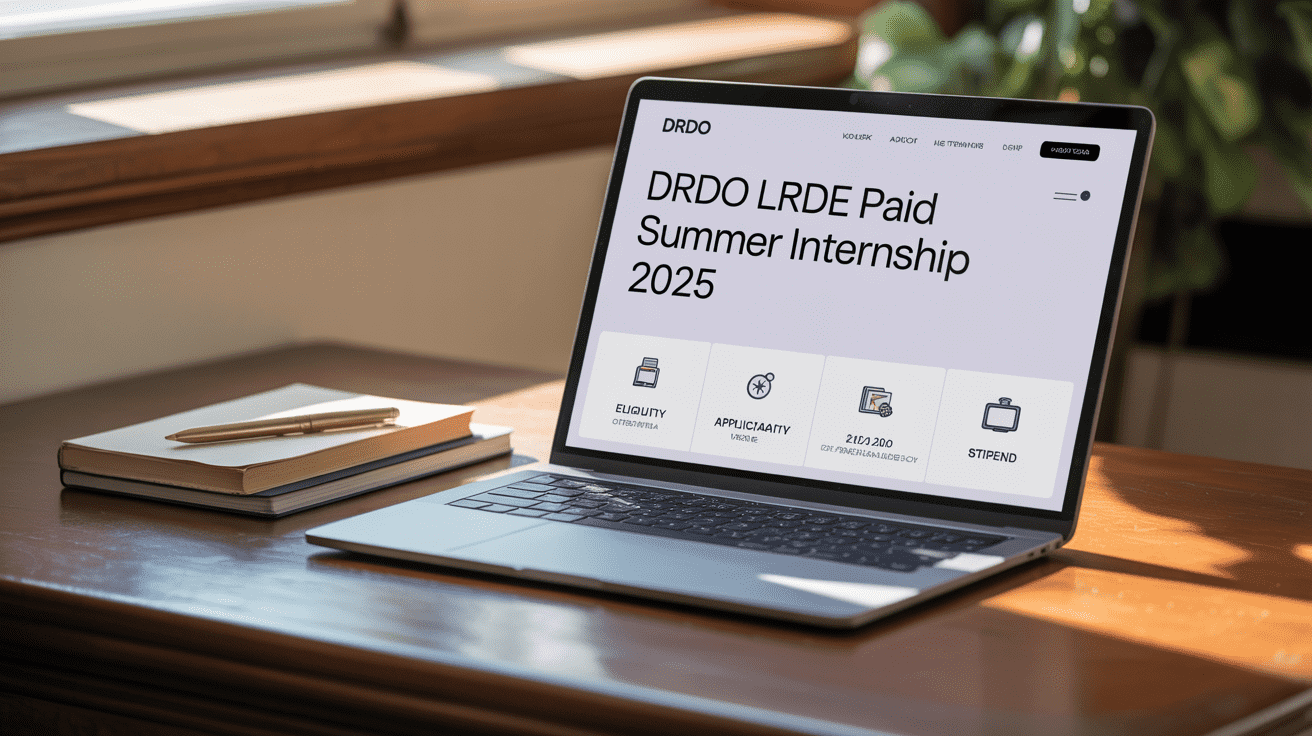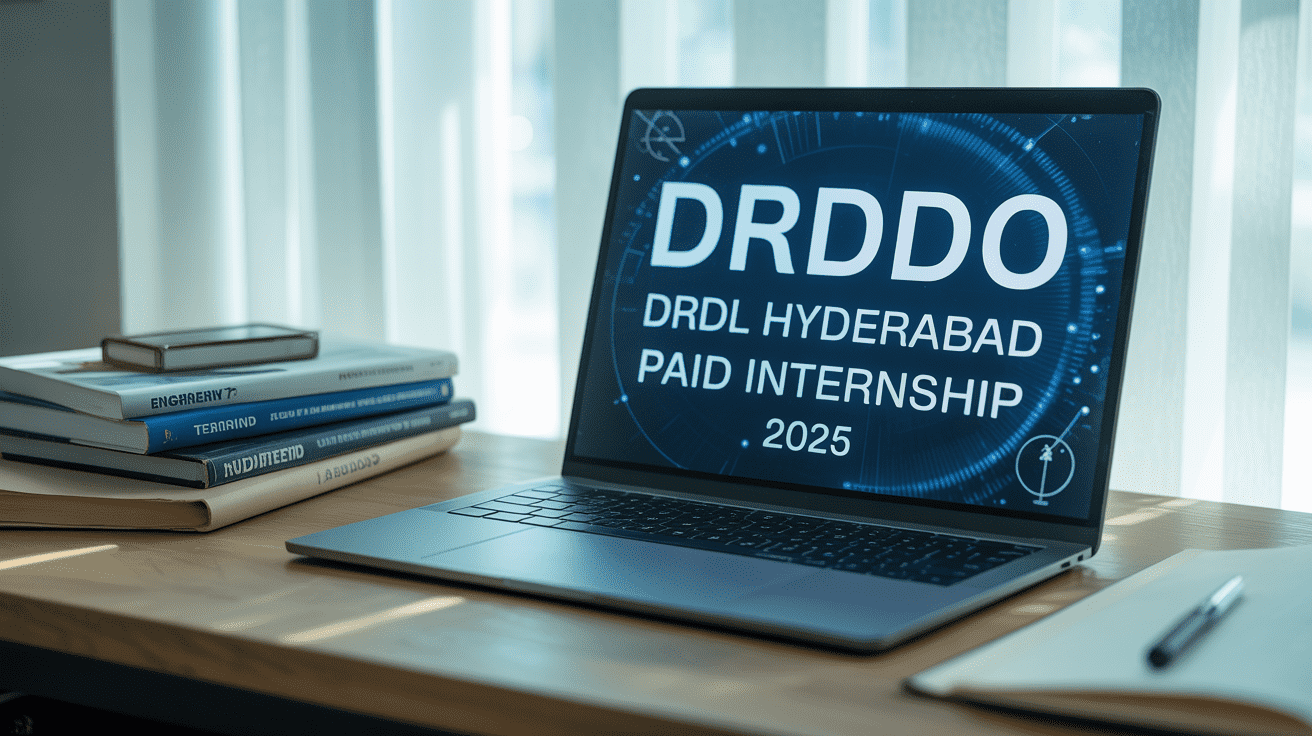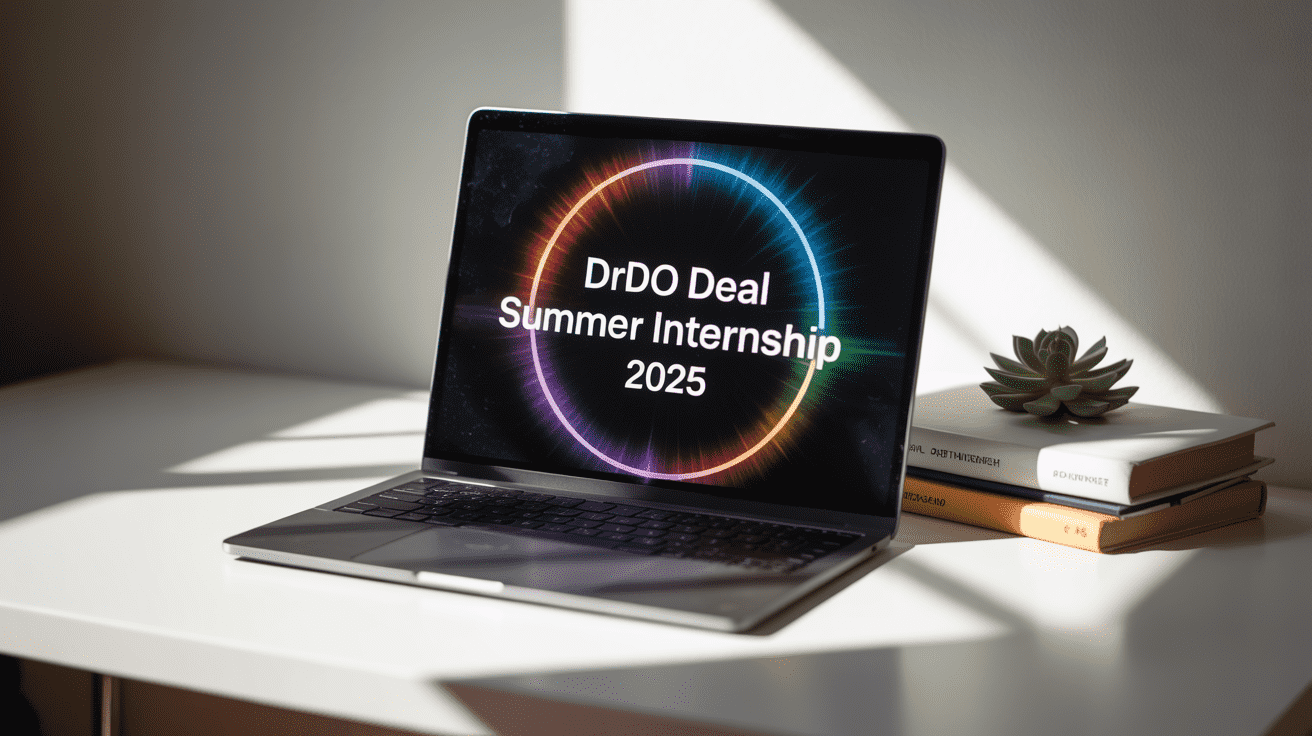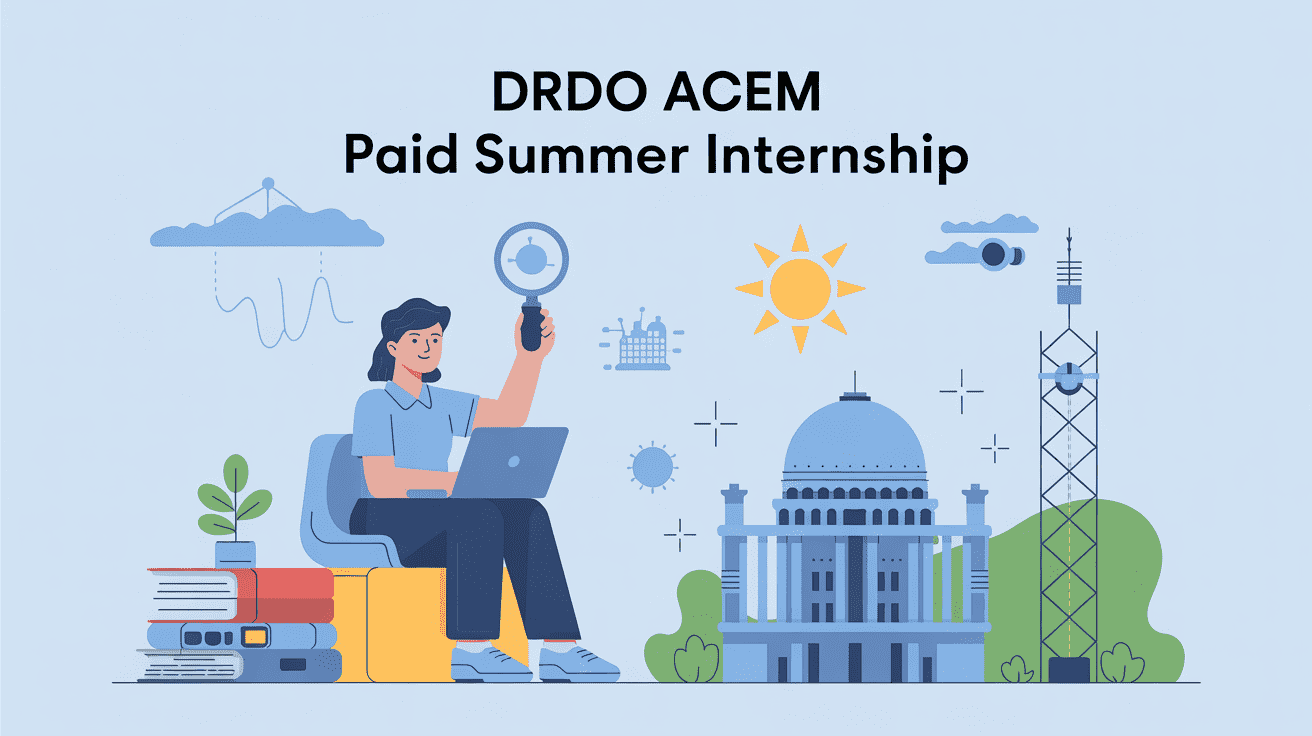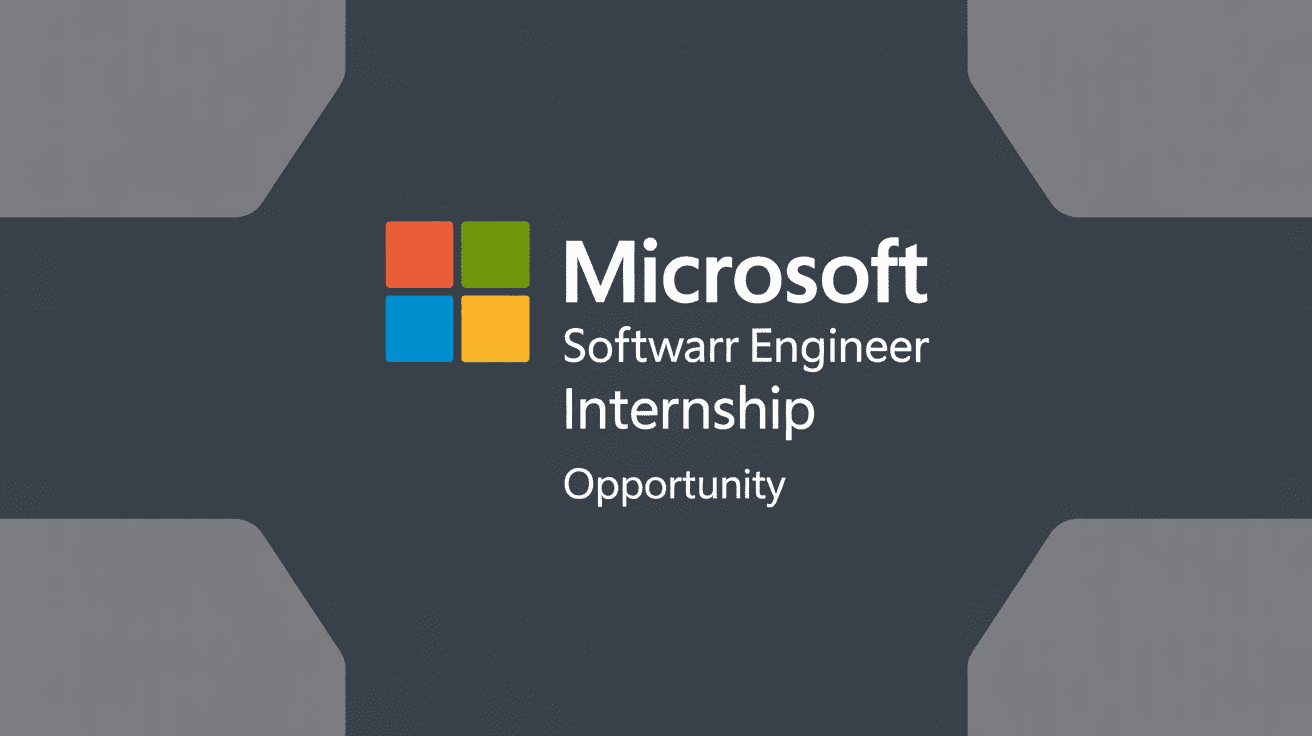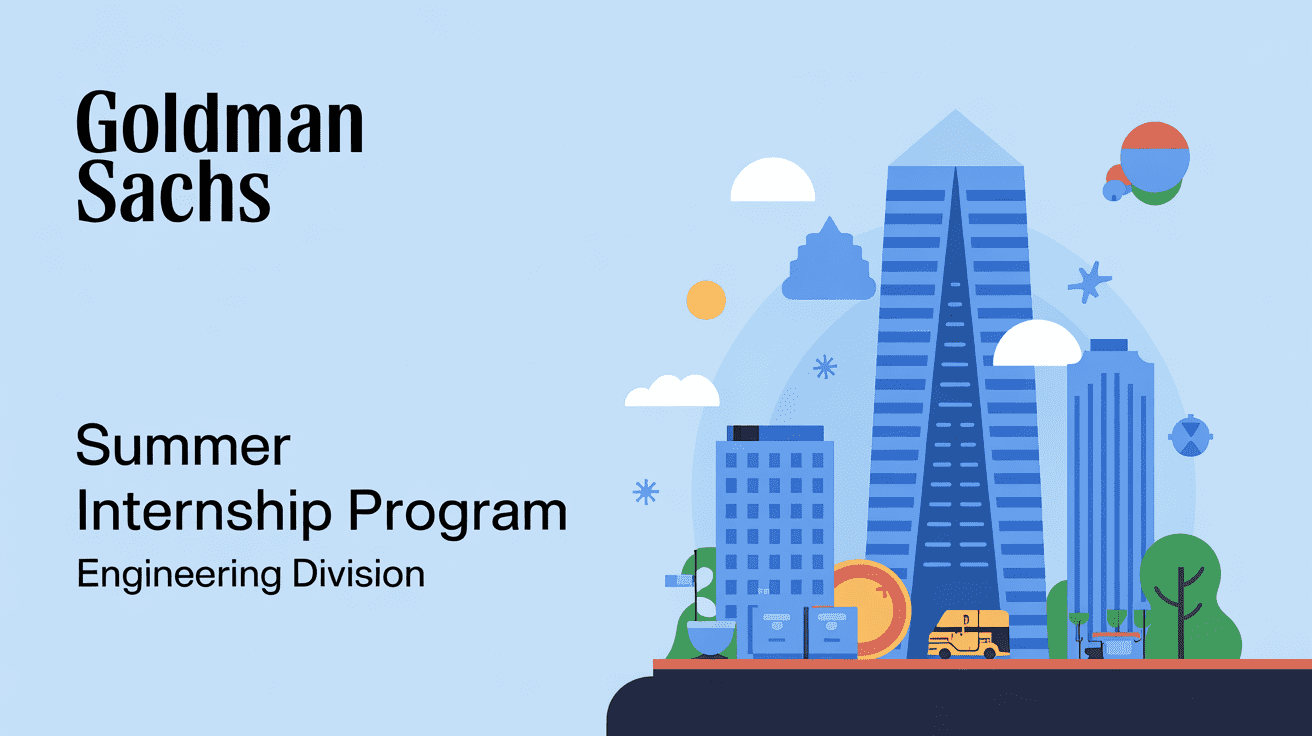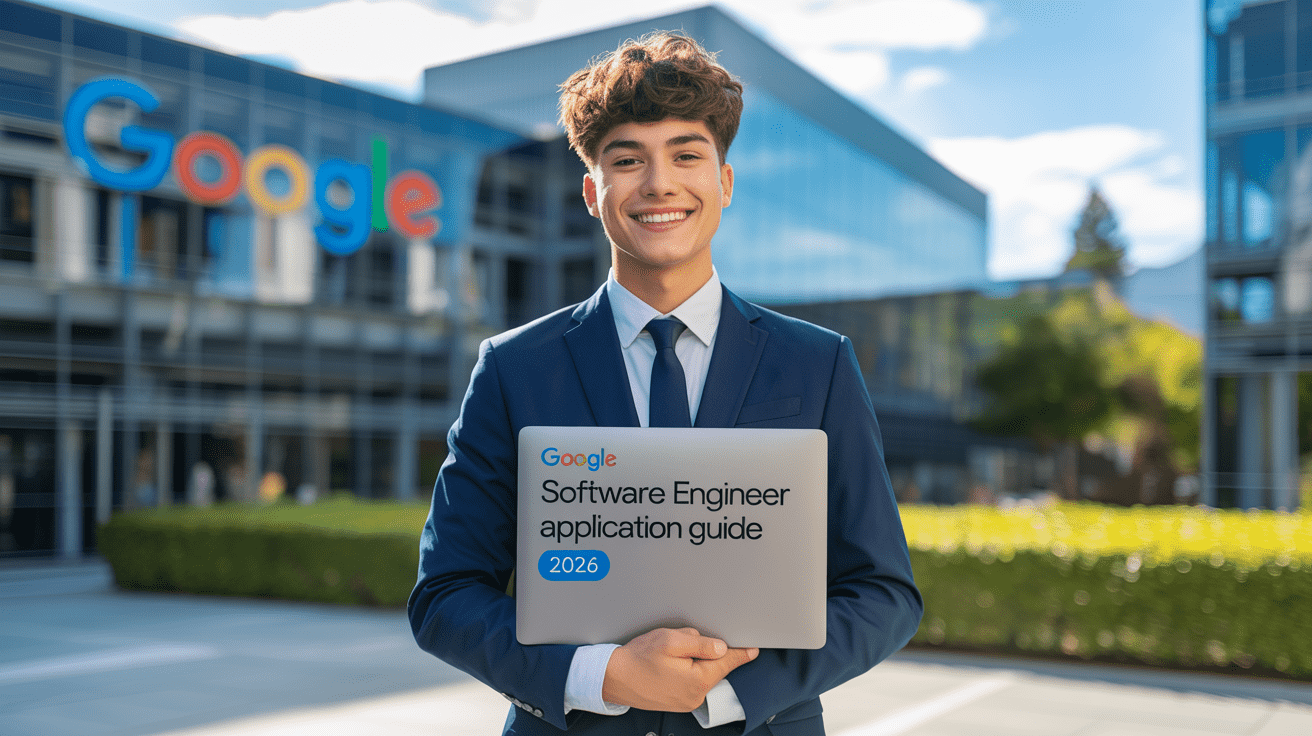The Centre for High Energy Systems and Sciences (CHESS), a prestigious laboratory under the Defence Research and Development Organization (DRDO), Hyderabad, has announced its Paid Internship Program 2025 for meritorious final-year students of Engineering and Science disciplines. This internship offers a unique opportunity to work on cutting-edge research in Laser, Optics, Opto-Mechanics, and Opto-Electronics.
Internship Overview
- Organization: DRDO – CHESS, Hyderabad
- Internship Type: Paid (6 Months Duration)
- Eligibility: Final Year UG/PG Engineering or Science students
- Monthly Stipend: ₹5,000
- Total Stipend: ₹30,000 (in 2 Installments)
- Mode of Application: Email (with scanned documents)
- Internship Start Date: 1st August 2025
Internship Domains & Vacancy Breakdown
Here’s the detailed list of branches and the corresponding number of available seats:
| Discipline | Branch Code | Vacancies |
|---|---|---|
| Physics / Applied Optics | PH | 6 |
| Mechanical Engineering | ME | 6 |
| Electronics / Electrical / Communication | EE | 5 |
| Computer Science | CS | 3 |
| Total | 20 |
Note: The number of vacancies may vary at the discretion of CHESS authorities.
Who Can Apply? (Eligibility Criteria)
To qualify for the internship, candidates must meet the following conditions:
- Educational Qualification:
- Pursuing a full-time UG/PG degree in Engineering or Science.
- Final-year students only.
- Must be from a UGC/AICTE-recognized Indian university/institute.
- Academic Requirements:
- Minimum 75% aggregate marks or 7.5 CGPA on a scale of 10.
- Academic record must be supported by mark sheets.
- Age Limit:
- Applicant must be below 28 years of age.
- Referral Letter:
- A formal recommendation or referral letter from the Principal or Director of the college is mandatory.
Internship Duration & Completion Certificate
- Tenure: 6 months
- Completion Certificate: Issued only upon successful completion of the entire internship period.
- Attendance Requirement: At least 15 working days per month must be fulfilled to be eligible for stipend and certification.
Stipend Details
- Total Stipend: ₹30,000
- Disbursal:
- ₹15,000 after completing the first 3 months
- ₹15,000 after completing the full 6 months
Students who discontinue the internship before completing 6 months will not receive any stipend.
Expenses such as travel, food, lodging, and medical care will not be covered and must be borne by the intern.
Step-by-Step Application Process
1. Download the Application Form (Page 4,5)
- Visit: https://www.drdo.gov.in/drdo/sites/default/files/career-vacancy-documents/advtCHESS01072025.pdf
2. Fill the Application
- Enter personal details, academic background, contact info, etc.
- Affix a recent passport-size photograph.
- Sign the declaration form.
3. Gather Required Documents
Ensure the following are enclosed:
- Referral Letter from Principal/Director (on official letterhead)
- All UG/PG mark sheets (up to the latest semester)
- Copy of Aadhaar Card
- Resume (optional, but preferred)
4. Scan and Email Application
- Scan the complete filled-in application and enclosures.
- Email it to: hrd.chess@gov.in
- Subject Line: “Application for DRDO CHESS Internship 2025 – [Branch Code]”
Important Dates
| Event | Date |
|---|---|
| Last Date to Apply | 15th July 2025 |
| Selection Notification | 22nd July 2025 |
| Internship Start Date | 1st August 2025 |
Late or incomplete applications will be rejected. No follow-up communication will be entertained for rejected candidates.
Selection Process
- Merit-Based Shortlisting: Based on CGPA/Percentage & academic record.
- Only shortlisted candidates will be informed about their selection via email.
- Selected students will be required to sign an Indemnity Bond and provide mandatory documents at the time of joining.
Documents Required at the Time of Joining
Selected candidates must bring original and photocopies of the following:
- No Objection Certificate (NOC) from the college authority.
- Acknowledgment of Police Verification from the local police station.
- Undertaking for Indian Official Secrets Act, 1923
- IT Rules Compliance Undertaking
- Bank Account Details (for stipend transfer)
- Government-issued Aadhaar Card
- College ID Card
- All Semester Mark Sheets
- 3 Passport-sized Photographs
- Any additional documents if requested by CHESS
All original documents will be returned after verification.
Format of Undertakings
Official Secrets Act Declaration
Must certify awareness and compliance with the Official Secrets Act, 1923.
IT Rules Agreement
Interns must agree to abide by all IT rules and regulations applicable to the Ministry of Defence.
Key Highlights to Remember
- Internship is strictly for final-year students.
- CHESS holds the right to modify the number of vacancies or selection criteria.
- No TA/DA or accommodation is provided.
- Completion of full 6 months is mandatory for stipend eligibility.
- This is a highly competitive program. Apply early with accurate documentation.
